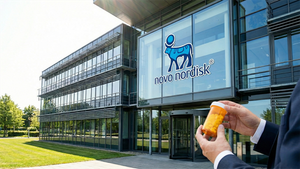
SPONSORED CONTENT -- (StatePoint) Experts say that with mortgage rates beginning to rise, refinancing your home now might be your last best chance to lower your monthly mortgage payment, as rates remain near all-time lows.
Those who refinanced early in 2021 have already reaped the benefits. Borrowers who refinanced their 30-year fixed rate mortgage into another 30-year fixed rate mortgage during the first half of 2021 saved over $2,800 in mortgage payments on principal and interest annually, according to a recent Freddie Mac research report.
But mortgage rates are rising. Indeed, in October 2021, the 30-year fixed-rate mortgage, which is the most common type of mortgage, rose to its highest point since April, surpassing 3.0%. Freddie Mac forecasts that mortgage rates will continue to rise, averaging 3.5% for the 30-year fixed in 2022. That’s up from an average of 3.0% in 2021.
So is it time to refinance your home loan? To help you make an informed decision, Freddie Mac is offering answers to commonly asked questions about the refinancing process:
• What does refinancing mean? When you refinance your mortgage, you’re applying for a new mortgage to replace your current one, which will result in a new rate, term and monthly payment. The most common type of refinance is a no cash-out refinance, in which you’re refinancing the remaining balance on your mortgage.
• When should I consider refinancing? Generally speaking, refinances make the most financial sense when average interest rates are at least half a percentage point lower than the interest rate on your current mortgage. Another reason to consider refinancing is if your financial situation has improved, allowing you to secure a loan with a shorter term and own your home sooner. Finally, if you currently have an adjustable-rate mortgage (ARM) and it’s adjusting upward, you may wish to convert to a fixed-rate mortgage that provides you with the security of consistent payments.
• Is refinancing free? Although refinancing your mortgage could save you money both in the long- and short-term, it isn’t free. For the most part, refinancing costs are similar to what you paid when you purchased your home, including a loan origination fee. There are required services involved, such as appraisals, and state and local fees that can vary significantly based on where you live. The average cost to refinance is almost $5,000, so you should carefully consider how long you plan to stay in your home to ensure the savings to outweigh the costs.
• Who should handle my refinance? You don’t have to use your current lender to refinance your loan. In fact, it’s in your best interest to shop around and compare multiple lenders’ loan estimates in search of the best terms and cost. It may take more time, but even a difference as small as one-quarter of a percentage point can save you thousands of dollars over the life of your home loan. The good news? Rates are often negotiable. In other words, you can ask lenders to match the rate quoted by another lender.
There may be no time like the present to lock in the lowest possible rate and receive the highest monthly savings. To get a sense of what refinancing could save you, access Freddie Mac’s refinance calculator, along with additional homebuying and refinancing resources, at myhome.freddiemac.com.
As with any big financial endeavor, you’ll want to do your homework, look carefully at your short- and long-term goals, and work closely with your lender to do a cost-benefit analysis.
Photo Credit: (c) Chris Ryan / iStock via Getty Images Plus





